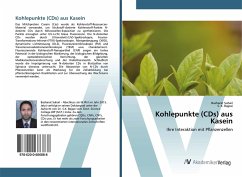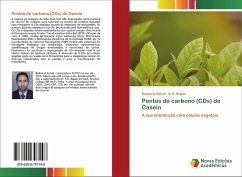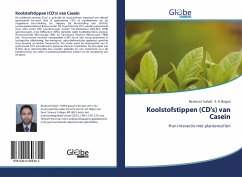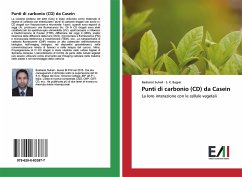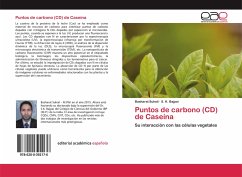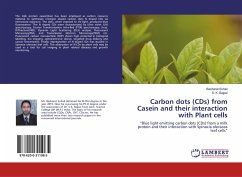
Carbon dots (CDs) from Casein and their interaction with Plant cells
"Blue light emitting carbon dots (CDs) from a milk protein and their interaction with Spinacia oleracea leaf cells"
Versandkostenfrei!
Versandfertig in 6-10 Tagen
27,99 €
inkl. MwSt.

PAYBACK Punkte
14 °P sammeln!
The milk protein casein(Cas) has been employed as carbon resource material to synthesize nitrogen doped carbon dots N doped CDs via microwave exposure. The dots, when exposed to UV light, produced blue fluorescence. The N doped CDs were characterized by Ultra violet (UV) spectroscopy, Fourier Transformation Infra-Red (FTIR) spectroscopy, X-ray Diffraction(XRD), Dynamic Light Scattering (DLS) analysis, Fluorescent Microscopy(FM), and Transmission Electron Microscopy(TEM) etc. Fluorescent carbon nanoparticle (CNP) shows high potential in biological labelling, bio imaging, optoelectronic device, ...
The milk protein casein(Cas) has been employed as carbon resource material to synthesize nitrogen doped carbon dots N doped CDs via microwave exposure. The dots, when exposed to UV light, produced blue fluorescence. The N doped CDs were characterized by Ultra violet (UV) spectroscopy, Fourier Transformation Infra-Red (FTIR) spectroscopy, X-ray Diffraction(XRD), Dynamic Light Scattering (DLS) analysis, Fluorescent Microscopy(FM), and Transmission Electron Microscopy(TEM) etc. Fluorescent carbon nanoparticle (CNP) shows high potential in biological labelling, bio imaging, optoelectronic device, targeted drug delivery and cancer theranostics. Finally, impregnation of N doped CDs was studied in Spinacia oleracea leaf cells. The absorption of N-CDs by plant cells may be used as a tool for cell imaging in plant related diseases and growth monitoring.




